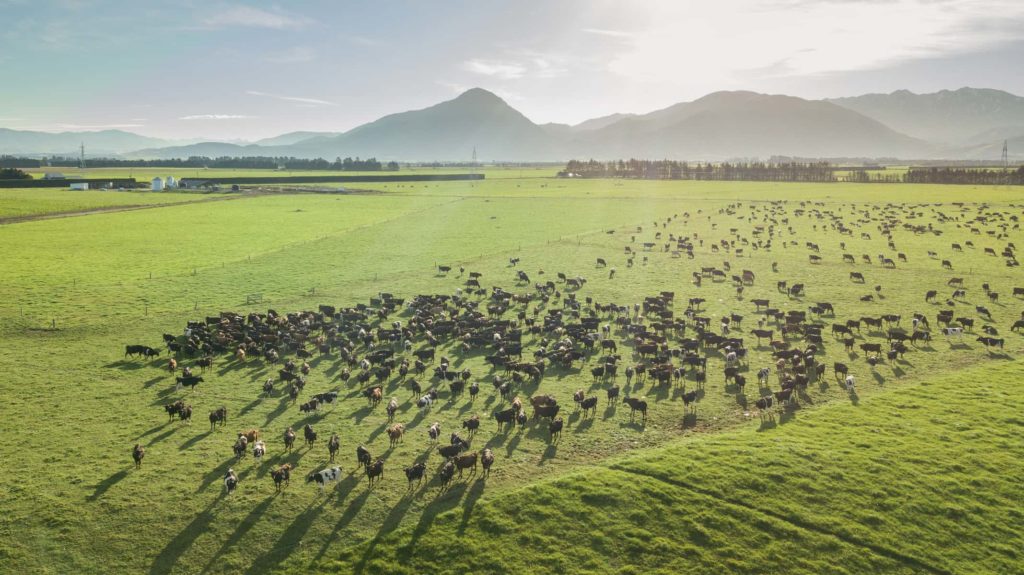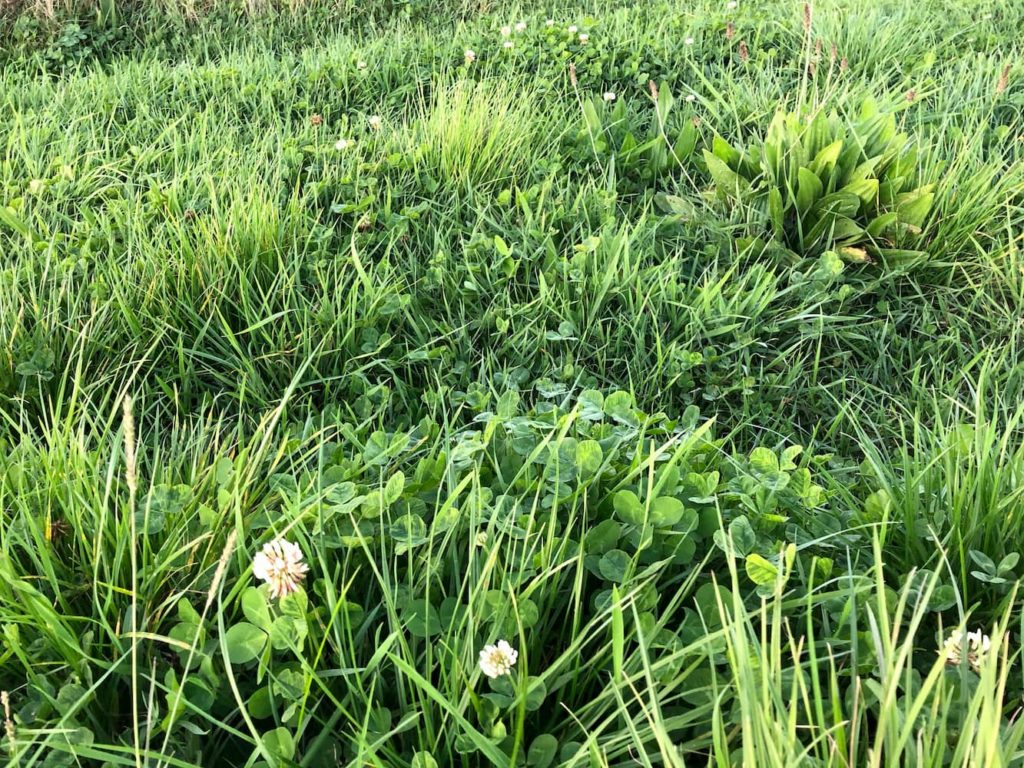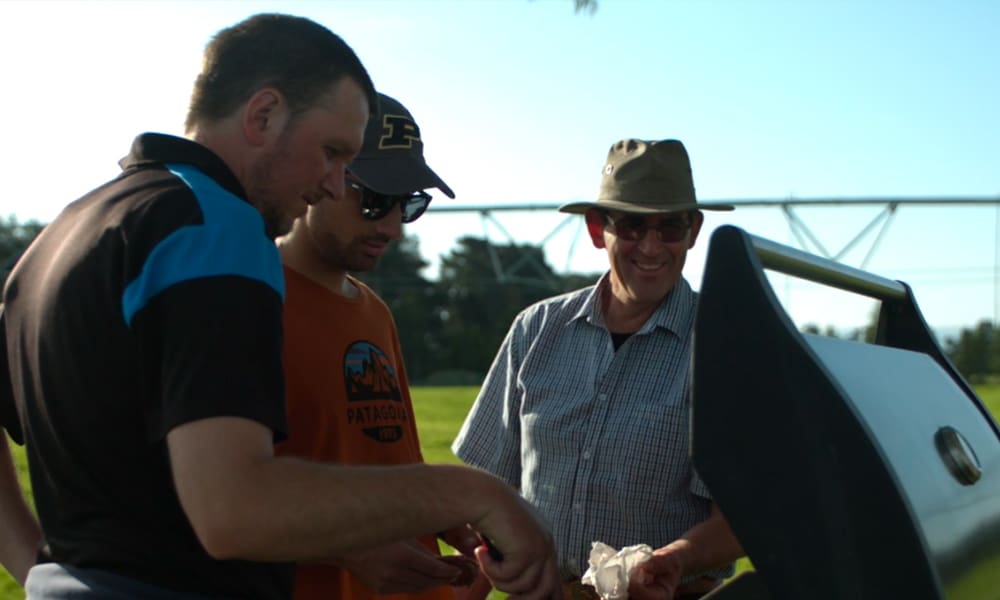Grass-Fed
A salad of nature’s fresh greens

On The Menu
Putting the good nutrients into soils, with the least amount of unnatural intervention is what we do best. Our methodology is using a rotational grazing system. No barns just 365 days free-range – letting the cows do all the hard work for us. Over the course of a farm rotation, cows will travel over the entire effective land on a farm in a planned and well-orchestrated manner, usually segmented even within paddocks allowing for pasture to be eaten continuously and evenly.

Nature’s Fertiliser
Because the cows rotate outdoors around the farm their poop naturally deposits around the pasture.
Keeping the “poop in the loop” increases pasture production by naturally feeding the soils nutrients and fertiliser, subsequently increasing the soil microbiome. Remember the top 6 inches of top soil generates 95% of food production.
Renewing Pastures
The vast majority of our seed planting for renewing the pastures is done by seed drill which does not involve ploughing or opening the soil for the release of carbon. Ideally, we don’t want to disturb the carbon that we’re burying along with the existing deep roots that are developing and holding all the little organisms that make the soil their home.

Grass Like Wine
There are many parallels between a good pasture farmer and a good wine maker. A good pasture farmer oversees the entire production process, from sowing varietals, measuring growth and assessing production.
Mitigating climate impacts and working through seasonal variations are challenging and require a technical understanding of growing patterns. Accurate and timely harvests so the fermentation process for sileage can be just perfect and the continual juggle of not overfeeding or underfeeding the cows so there is enough grass in the panty to cover the entire year … vital to feeding the many hungry cows and their discerning palettes.

Human Health
There’s more than just a theory out there that purports humans are much better off in terms of gut bacteria if the food they eat comes from vegetables or animals eating greens that are grown in a soil-based system.
Hydroponics or petri grown foods do not carry the same amount or quality of microbes that human guts require. The transfer of these minute organisms works in a symbiotic partnership assisting in digestion, health and in some instances allergies.


